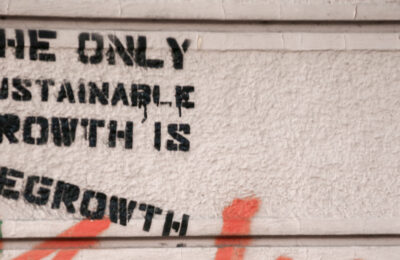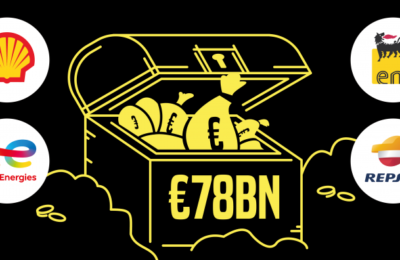Sean Thompson skewers a few myths….
 Among the mass of fake news stories promoted variously by right wing cranks, cynical politicians and the fossil fuel and petro-chemical industries – global warming is caused by sun spots, electric cars are as (or more) polluting than internal combustion vehicles or wind turbines are responsible for avian genocide – there is one which appears to have some actual basis in reality: single use plastic shopping bags are less environmentally harmful than reusable fabric bags.
Among the mass of fake news stories promoted variously by right wing cranks, cynical politicians and the fossil fuel and petro-chemical industries – global warming is caused by sun spots, electric cars are as (or more) polluting than internal combustion vehicles or wind turbines are responsible for avian genocide – there is one which appears to have some actual basis in reality: single use plastic shopping bags are less environmentally harmful than reusable fabric bags.
For example, in August, The Independent carried a story (taken from the New York Times) saying that reusable cotton shopping bags were, in fact, more environmentally damaging than the common-or- garden high-density polyethylene (HDPE) bags available at your local supermarket. Even though the NYT’s story was partly based on a study done for the Progressive Bag Alliance, which represents the U.S. plastic bag manufacturing and recycling industry, it also referenced a 2018 study for the Danish Government’s Environmental Protection Agency. This report, which broadly covers the same ground as a 2011 report by the British Government’s Environment Agency; Life Cycle Assessment of Supermarket Carrier Bags, concludes that, overall, plastic bags are ‘better’ for the environment than paper or reusable bags unless the latter are used many times.
Both studies compared a range of bags, from the standard flimsy HDPE bag, through biodegradable carriers made from a starch-polyester (biopolymer) blend, paper bags and ‘bags for life’ made from low-density polyethylene, to cotton bags. Both studies calculated the global warming impact of the production of each type of bag and took into account other environmental impacts: resource depletion, acidification, eutrophication, human toxicity, fresh water aquatic ecotoxicity, marine aquatic ecotoxicity, terrestrial ecotoxicity and photochemical oxidation (smog formation). They then calculated how many times each different type of carrier would have to be used to reduce its global warming potential to below that for conventional HDPE carrier bags, and concluded (using the Environments Agency’s estimates) that paper, LDPE, non-woven PP and cotton bags should be reused at least 3, 4, 11 and 131 times respectively to ensure that they have lower global warming potential than conventional HDPE carrier bags that are used just once.
However, there are two-and-a-half flaws in these conclusions. Firstly, both studies assume that all the bags in the studies would go to landfill at the end of their life, rather than being recycled. But in Britain and many other industrialised countries landfill is being phased out, and those plastic bags not reused or recycled (and the vast majority of them aren’t) are increasingly being incinerated. Consequently, they are responsible for the generation of CO2 not included in either study. And, of course, the assumption that cotton bags will go to landfill at the eventual end of their (long) lives rather than being recycled is nonsense – as is the assumption that only cotton can be used to make fabric bags.
But much more importantly, the environmental impact of plastic bags is far more than just the amount of fossil fuels used in manufacturing them and the CO2 released in their disposal. Because plastics degrade slowly (often over hundreds to thousands of years), microplastics are being ingested, incorporated into, and accumulated in the bodies and tissues of many organisms, from earthworms to humans. Microplastics have polluted the entire planet, from the snow in the Antarctic to Alpine soils to the deepest point of the ocean – the Mariana Trench in the Pacific. In 2017 the Ellen MacArthur Foundation estimated that, by weight, there will be more plastics than fish in the sea by 2050. As for humans, we consume micro and nano plastics via food and water, and also breathe them in. A study by the university of Newcastle in 2019 found that on average we each ingest around 5 grams of plastic per week – the equivalent weight of a credit card.
Plastic bags make a significant contribution to this pollution. It is estimated that 5 trillion are produced each year – around 160,000 a second. In 2009, the US International Trade Commission estimated that 102 billion plastic bags are used in the USA each year; the equivalent of 365 bags per year for every person. However, the UK experience shows that is is relatively easy to make a dent in these staggering figures. In 2014, before the 5p per bag charge was introduced, retailers issued the equivalent of 140 single use bags to each person in Britain. In 2016-17, after the charge was introduced, that figure had reduced to 19 bags a head, and by 2018-19 to just 10 bags per head. However, there is still much room for improvement – in Denmark the average person uses just 4 bags a year. There are perfectly practical alternatives to single use plastic bags, such as cotton, or preferably flax, jute or hemp, that can be reused almost indefinitely and when finally at the end of their life don’t need to be incinerated or go into landfill, but can be deconstructed back to reusable fibre.
What all this demonstrates is that first, not only should we approach some of the rushed and sensationalist material (often based on ill digested press releases or nicked from other newspapers) sometimes found in normally more balanced sources such as the Guardian and the Independent with a large cupful of salt, but that also we should be aware that serious studies by independent academic researchers can be flawed by narrow terms of reference, as in the case of the English Environment Agency and the Danish Environmental Protection Agency’s reports. Second, that real changes can be made to the status quo if government action (like imposing a charge on single use plastic bags) actually provides support to popular campaigns. And third, that the well worn message urging us to ‘reduce, reuse, recycle’ still makes sense and still bears frequent repeating.




One thought on “The Great Plastic Bag Myth”